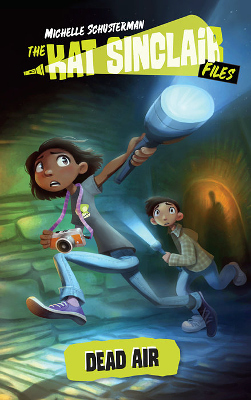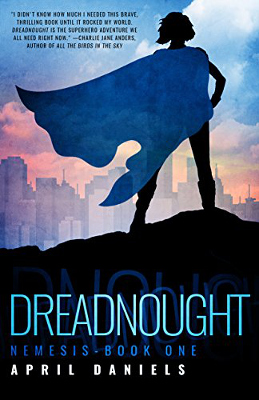 First Published: 2nd May, 2017
First Published: 2nd May, 2017
Genre: Young Adult Contemporary / Novel
Available: Amazon.com | Amazon UK
Jordan Sun has failed to get any parts in school musicals because of her deep voice. When she sees an advert for all-male a cappella group the Sharpshooters, she disguises herself as a boy and auditions as a tenor.
I’m generally not a big fan of books where someone pretends to be a different gender. It’s not uncommon for such books to use trans themes in ways that are comfortable for cis readers, but not so great for trans readers. Which might raise the question of why I wanted to read this one. The answer is Jordan’s deep voice. I wondered if she might be intersex, and therefore, if the book might tackles issues of binary sex. I was also interested because the musical world is very strict on the idea of sex binaries when it comes to voices, so it seemed like a good setting for such a story. The book didn’t really do what I was hoping, but those were my thoughts behind why I wanted to read it.
The plot revolves around training for an a cappella competition, with the hopes of winning a place on a tour. I wouldn’t say it’s the primary focus though, as it has more of a character focus with Jordan getting to know the other members of the group. It’s generally paced well, noting that it is the sort of story with a slow pace. Where it falls down is the pacing after the competition. It feels as though the book was intended to be longer, but ended up with just a few scenes trying to cover everything.
The two characters with the most development are Nihal and Isaac. Jordan becomes close friends with both. Nihal is a kind person who has a few similarities to Jordan, such as studying outside of the music school. He’s a Sikh, Indian American, and gay. Isaac says things without thinking regardless of who it hurts, which I was supposed to find funny and endearing, but just found obnoxious. He’s Japanese American. In both cases, Jordan discovers things about their lives and families. She describes what they look like clearly. I left feeling I had a good grasp of these characters.
Erik, Jon, Theodore (nicknamed Mama) and Marcus had a defining character trait but not a lot else. Erik’s main feature is he’s short and looks very young, whilst having a deep bass voice. Jon is very rich and turns out to be dyslexic, which is mainly noticed because he was held back a few years when he was younger. Jordan notes he’s a slow reader, but it’s not portrayed as meaning he can’t read, which makes a change. Theodore is initially introduced as carrying wet wipes around and liking clean surfaces, but he didn’t get enough development to judge if that connected to any non-neurotypicality or not. He’s fat and the book mainly avoids shaming him for that, outside of someone outside the group being nasty. Marcus likes political stuff and I have no real image of what he looks like. In general, characters in this category were light on description, so I ended up trying to piece it together from odd comments. I’m unsure about things like race.
Trav is the musical director of the group and sits somewhere between the two in terms of development. Jordan doesn’t get to know him that well, but I did remember him as a distinct character, whereas I was forever getting the vague characters mixed up. Trav has anxiety. He’s described as having dark skin at one point. That’s often used as a way to say a character is black without saying they’re black, which I think may be the case here.
It’s odd how the book has some characters who are described very clearly and some who are so very vague. Isaac and Nihal get described repeatedly, but I was left searching through for descriptions of the others. I may have missed something, as the references were spread out and infrequent.
I did like that the characters aren’t perfect and there’s pushback to imperfect things they say. For example, when one has this thing about women loving alpha men, it isn’t just Jordan who thinks that’s nonsense. Theodore is given a nickname he hates, which Jordan takes for granted, until realising Nihal won’t use the nickname because he was asked not to use it. However, something that didn’t get any pushback was using moron, which sticks out particularly when there’s a dyslexic character who has a reasonably chance of having been on the receiving end of slurs like that.
The strongest area for me was the class representation. Jordan is from a poor family, who were made poorer after her dad was in an accident. It talks about some of the issues with being poor, such as benefit schemes not allowing people to save money, thus ensuring they stay poor. There’s the intersection of her family being Chinese immigrants and the system being designed to make sure they never entirely manage to get things together. She also feels out of place in a wealthy school environment where most people come from middle to upper class backgrounds. It’s something I can relate to, as going to university was a big struggle for me, because no one else in the family had ever done it. Things people took for granted about university culture were very alien to me.
Jordan is clear that she’s cisgender from the start. She does question her gender and presentation, though decides she’s a cis girl. Questioning gender isn’t something restricted to trans people, so I liked the general idea of this. Though I’d note it’s not necessary to do the whole girl-disguised-as-a-boy thing to do so.
There is an attempt to address potential appropriation of trans experiences in the text, but the way it’s handled didn’t work for me. Jordan considers how trans people might feel about what she’s doing, and whether there might be unintended consequences for trans people if she is found out. It could mean increased attempts to police people’s gender, for example. That passage showed some thought about it, but the trans people she mentions as knowing (one trans girl and one genderqueer person) are minor references. Acknowledging that something might be erasing or appropriating trans experiences does fall rather flat in a story that doesn’t have prominent trans characters. Acknowledging it is really only the start. It also felt that outside of that genderqueer reference, gender was mainly handled as a binary. Jordan has her real girl self and her fake boy self, with nothing between, so the mention of a non-binary person is a blink-and-miss-it moment.
I’d note this binary gender vibe also got into the book presentation. The pre-release version I was given had male and female symbols on the cover. These were mixed with notes that came out of two different singing mouths. I wasn’t fond of the use of the binary symbols, but they were in all different colours, which suggested a spectrum. They were also mixed together, as each mouth had both symbols. The official release cover turned all the male symbols blue and the female symbols pink. It made one mouth have all the male symbols and one all the female. It also added extra copies of these symbols to the chapter headings. It’s like between pre-release and final release, someone decided to up the binary to the max. Authors with large publishers don’t control their cover or book design, but it doesn’t stop these decisions potentially impacting people who pick up the book. It also makes it very clear how the publisher views the story.
Jordan is bisexual and had a long-term relationship that fell apart. I liked that it challenges the idea of a first partner being the one forever and touches on the problems of getting too focused on a romantic relationship. Her whole world revolved around her ex-partner, which meant when things fell apart, she didn’t have any close friends and was left struggling alone. It was a more realistic portrayal of love than the idea that everyone meets their one true love as a teenager and friends are no longer required.
The new potential love interests weren’t so great. They changed their level of interest depending on whether they thought she was a boy or not. In other words, the most important thing wasn’t who she was as a person, but what they assumed about her body. I didn’t relate to any of this. I’m sure this does match some people’s experiences, but I just found it a bit freaky that someone would stop/start loving you because you’re not the gender or sex they assumed. I couldn’t really get behind a relationship that formed on that basis.
I wasn’t fond of the way gay characters were handled, because it does veer into the unhappy gay thing. Given the references to how many queer people the school was supposed to have, I’m sure one of them could have had a happy ending.
On to what I was hoping to find, Jordan does have traits that could mean she’s intersex. Her voice is deep enough that she puts on a higher voice at school, she’s tall (and taller than other women in her family), has a small breast size, has facial features like her father, and started puberty early, which all together can be pointers to being intersex. But this isn’t discussed. Not even at a level of considering that she doesn’t fit in the sex binary very well or that such a binary exists.
The book does touch briefly on musical attitudes to vocalists, but this isn’t taken all the way. It’s not acknowledged that she wouldn’t have felt the need to do something like that if she’d been recognised as a tenor in the first place. Rather than simply not casting her in anything, her teachers could have suggested she auditioned for the male roles. The focus is strongly on judging Jordan’s reaction to the system, rather than the system. Even when someone makes a positive judgement, it’s still missing why she ended up in that position. She still gets reclassified to a contralto, because women are contraltos and men are tenors. Which makes no sense as a position as she had been singing as a tenor with no one considering she was anything else for months, so it can’t be argued she had a different tonal quality to a tenor. But even Jordan doesn’t comment against this.
This book is a tricky one when it comes to recommending it or not, as it does some things well, and others not so well. The cast is diverse, including multiply marginalised characters, but there are odd holes. Like having a character who appears to tick off all the boxes for being intersex, but never mentioning it. Or mentioning a trans girl and a genderqueer person when there are themes about gender identity, but not actually having those characters appear. Or being vague about the black character being black when the Asian characters have their races clearly stated. It’s one of the better books I’ve read dealing with the trope of a girl disguising herself as a boy, but I didn’t feel it really rose above the common issues of that trope.
[A copy of this book was received from the publisher for review purposes]
 Series: The Kat Sinclair Files, #1
Series: The Kat Sinclair Files, #1 Series: Nemesis, #1
Series: Nemesis, #1 First Published: 12th February, 2016
First Published: 12th February, 2016 Series: Agatha Raisin, #1
Series: Agatha Raisin, #1